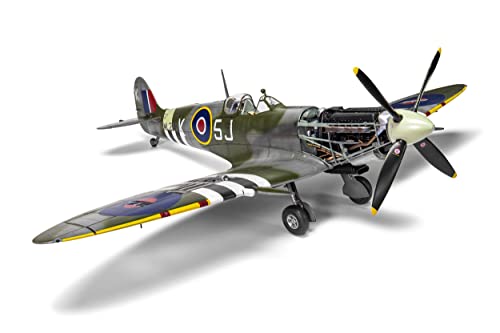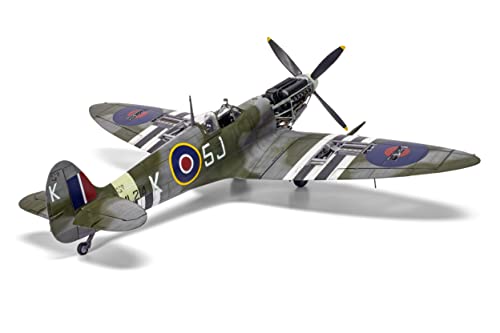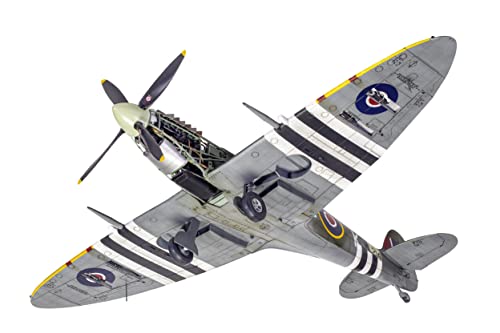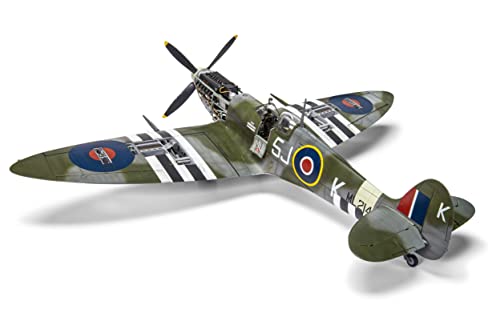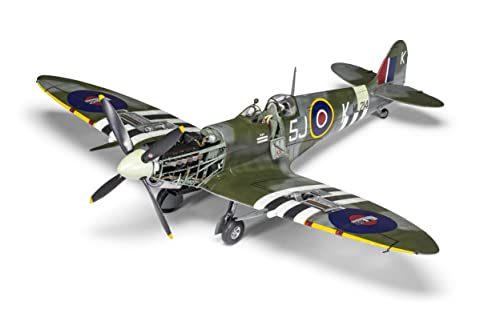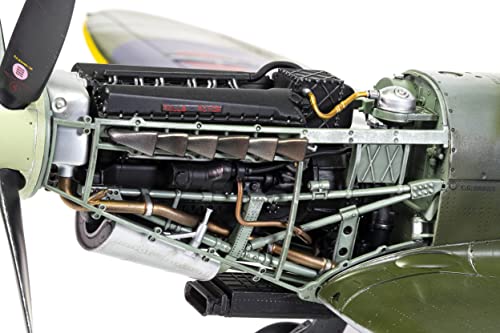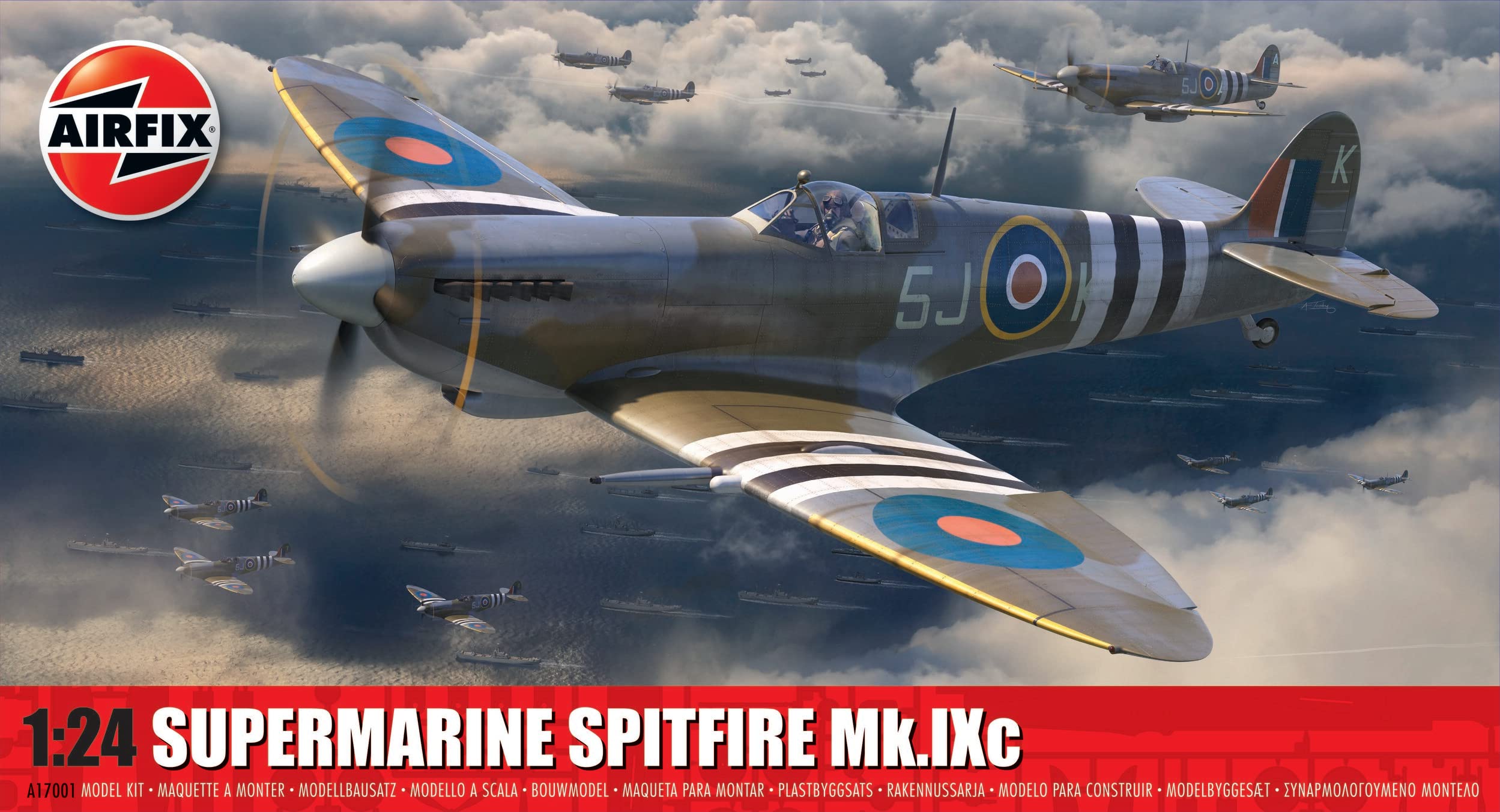Airfix Supermarine Spitfire Mk.IXc. Military Aircraft. Spitfire, (A17001), 39.7
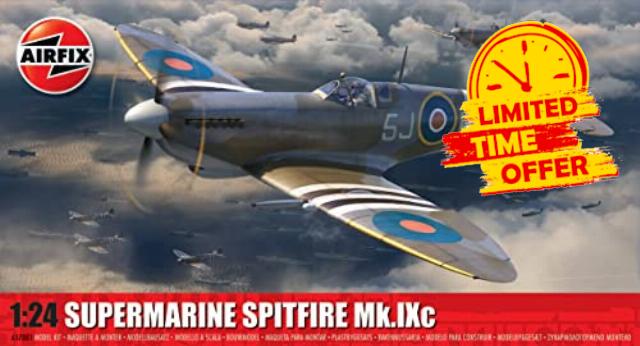
Airfix Supermarine Spitfire Mk.IXc. Military Aircraft. Spitfire, (A17001), 39.7 x 46.9 x 16.1 centimetres
- Earning its legendary reputation during the Battle of Britain, the Supermarine Spitfire holds an iconic status after serving as a beacon of hope for the nation during their darkest hour. The striking appearance offers elegance, masking the true form of this deadly fighting aeroplane. With constant development and as regular additions to Airshow events across the world, the Spitfire is widely regarded as one of the most famous British aircraft since its first flight over 85 years ago
- Pieces in the box: 433
- Wing Span (CM): 469
- 1:24 Scale, Whats in the Box: sprues & decals
In the world of aviation, is there any aircraft which can even come close to matching the iconic status the Supermarine Spitfire enjoys, a legacy which is as strong today as it was during the wartime years? A modern monoplane fighter aircraft which made its first flight from Eastleigh Aerodrome on 5th March 1936, the Spitfire would earn its legendary reputation during the Battle of Britain, when the pilots of the Royal Air Force stood defiantly against the overwhelming might of the all-conquering Luftwaffe, an aviation beacon of hope for a nation and its people during their darkest hour. Elegant and graceful to look at, the Spitfire’s appearance masked the fact that this was a deadly fighting aeroplane and one which was adaptable enough to undergo almost constant development throughout the wartime years, allowing later marks of the fighter to post speeds which were almost 100 mph faster than the first machines to enter service. With a service career which extended well into the post war years, the Spitfire outlived all its aviation contemporaries and with over 22,000 Spitfires of all variants (including Seafires) eventually being built, Spitfires are still a regular sight at Airshow events all over the world, as an ever increasing number of restored airworthy aircraft continue to write the enduring Spitfire story. Even though the prototype Spitfire made its first flight over 85 years ago, the aircraft is still widely regarded as Britain’s most famous aircraft type and instantly recognisable to many millions of people the world over.The Spitfire Mk.IX variant was arguably the most important mark of Spitfire in the entire production run and because of that, it is somewhat surprising to learn that it was actually something of a stop-gap development. The arrival of the Luftwaffe’s new Focke Wulf 190 fighter over the Western Front in August 1941 saw RAF Spitfire Mk.Vs operating over the Channel falling victim to the ‘Butcher Bird’ in ever increasing numbers and something had to be done. A major Spitfire upgrade was in progress, but the Mk.VIII was still some way off, as manufacturing facilities prepared their tooling jigs for the new aircraft, but there was a temporary solution. One of the major features of the new Spitfire was its use of a powerful new version of the Rolls Royce Merlin engine and it was proposed that fitting this new engine to a Spitfire Mk.V airframe would give the fighter a welcome performance boost.The first 100 Spitfire Mk.IX fighters were actually Mk.Vc airframes adapted to take the new Merlin 61 two stage, two speed supercharged engine, with this combination producing a thoroughbred fighting aeroplane, one which was more than capable of challenging the FW190 and the latest ‘F’ variant of the Messerschmitt Bf 109. In fact, the new Spitfire was considered so successful that this would become the second most heavily produced variant in the entire production run and if including the aircraft powered by the licence built Packard Merlin 266 (Spitfire Mk.XVI) even eclipsed the Mk.V in production numbers. With further powerplant refinement taking place throughout the production life of this variant, the first Mk.IX Spitfires started to join RAF Squadrons from July 1942, with this famous mark of Spitfire going on to see service past D-Day and into the post war era. The last major Merlin engine powered variant of the Spitfire, this ’emergency stop-gap fighter’ actually became something of an aviation classic.
Safety Warning
WARNING Not suitable for children under 36 months. It contains small parts which can present a choking hazard. Please retain these details and the address for future reference. CAUTION Please remove all packaging before giving the toy to a child.
| SKU: | B09RMWN81P |
| Dimensions: | 39.7 x 46.9 x 16.08 cm; 1.34 Kilograms |
| Model: | A17001 |
| Material: | Plastic |
| Colour: | Various |
| Pack Quantity: | 433 |
| Batteries Required: | No |
| Age: | 3 years and up |
| Assembly: | Yes |
| Material: | Plastic |
| Quantity: | 433 |
